Submitted by WA Contents
El Equipo Creativo converts 18th-century palace into hotel with rich textures and colors in Girona
Spain Architecture News - Feb 02, 2024 - 10:18 2240 views
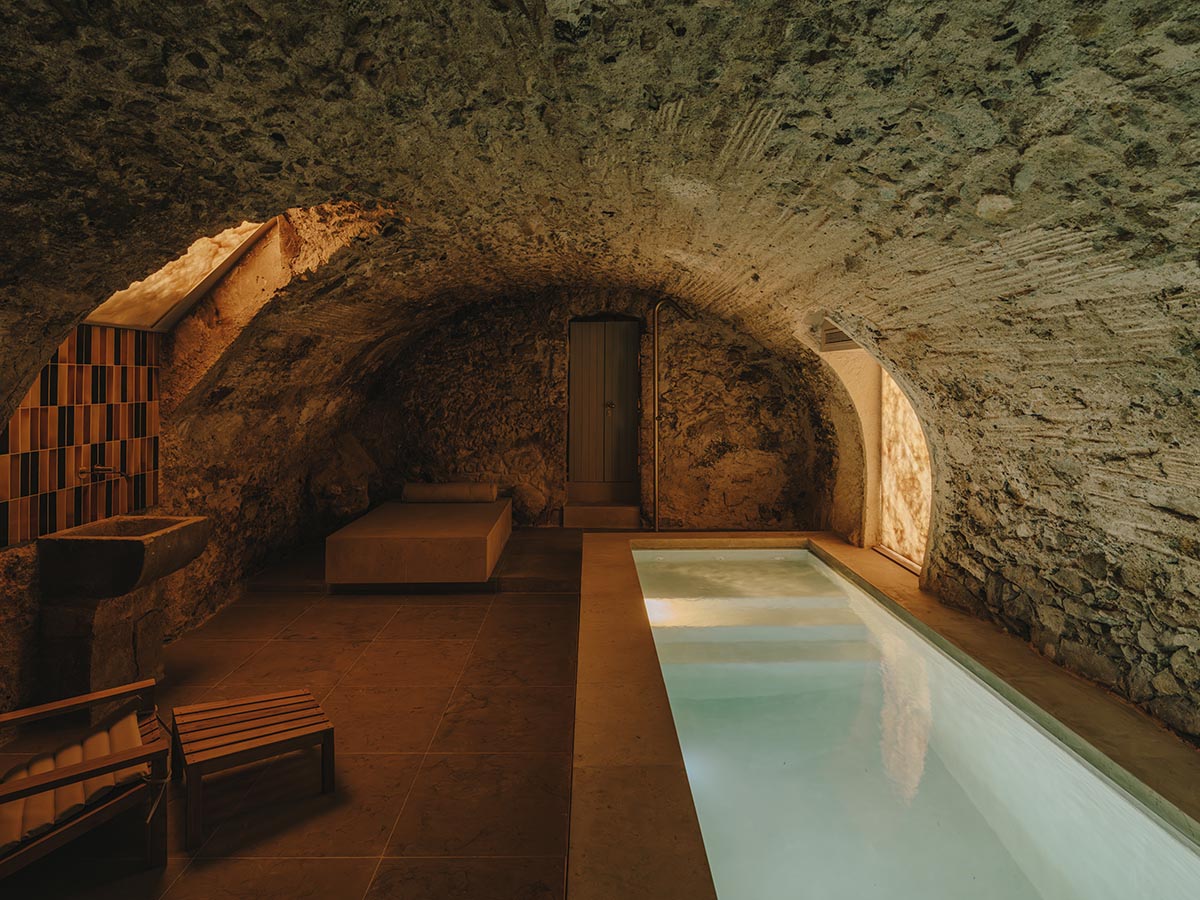
The spirit of the 18th century is very much felt in this hotel transformation, taking guests to the dusty but modernized spaces of the past.
Named Palau Fugit Hotel, the project is an overhaul of a disused 18th-century palace into a destination hotel with charming and seductive feeling as represents Girona itself.
Designed by Barcelona-based interior design studio El Equipo Creativo, the hotel features rich color, texture and material palette, perfectly combining retro and modern feeling in the interiors.
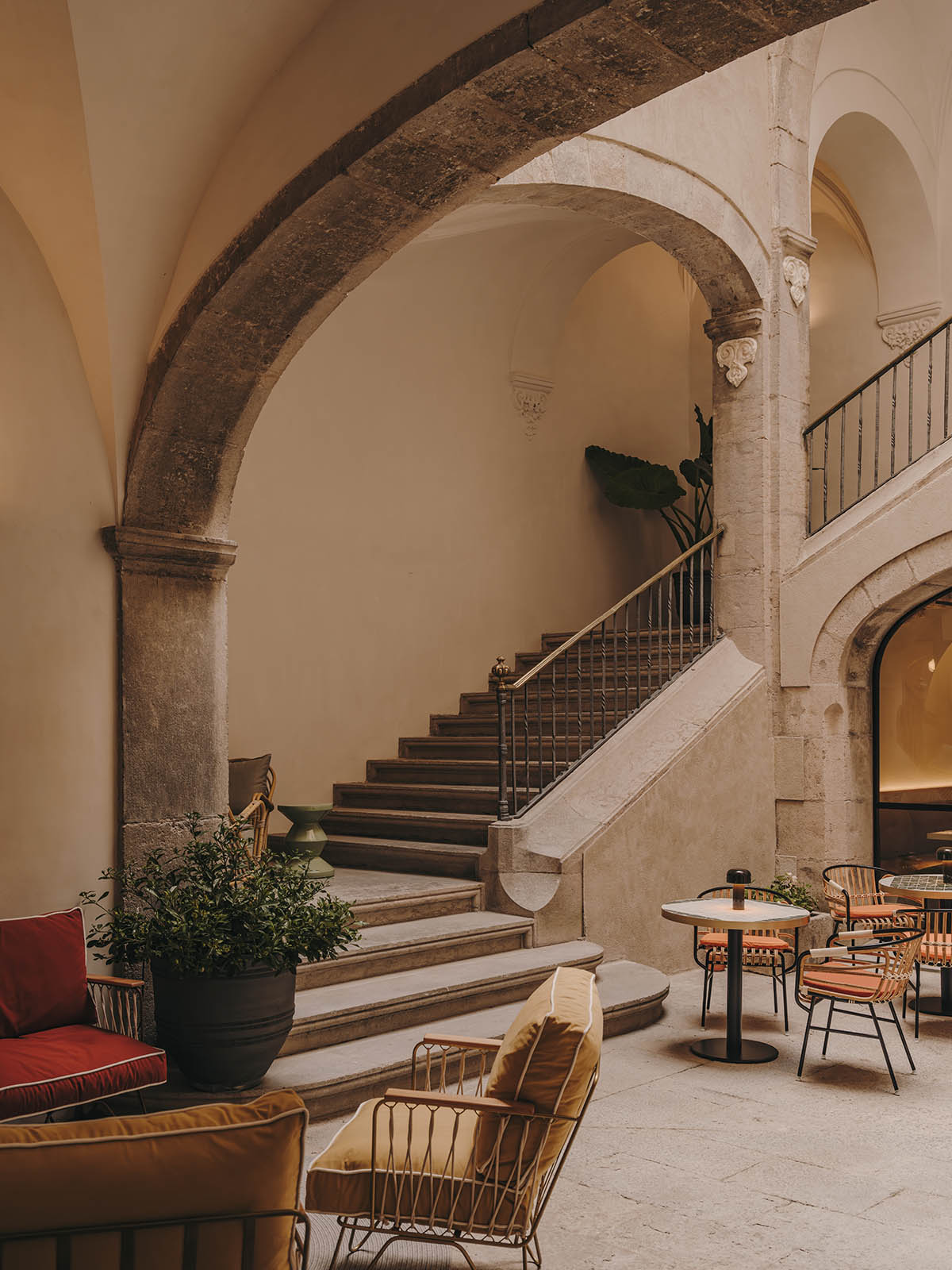
Entrance
Located deep in Girona’s atmospheric Barri Vell (Old Quarter) in Spain, to delve deeper into history, guests can swim under a barrel vault and drink coffee in an artistic cafe.
Two Gironas were the creative starting points for the studio; the first is the Barri Vell; which is known as an emblematic district of weathered stone facades, hidden cul-de-sacs, porticoes, and stone ramparts.
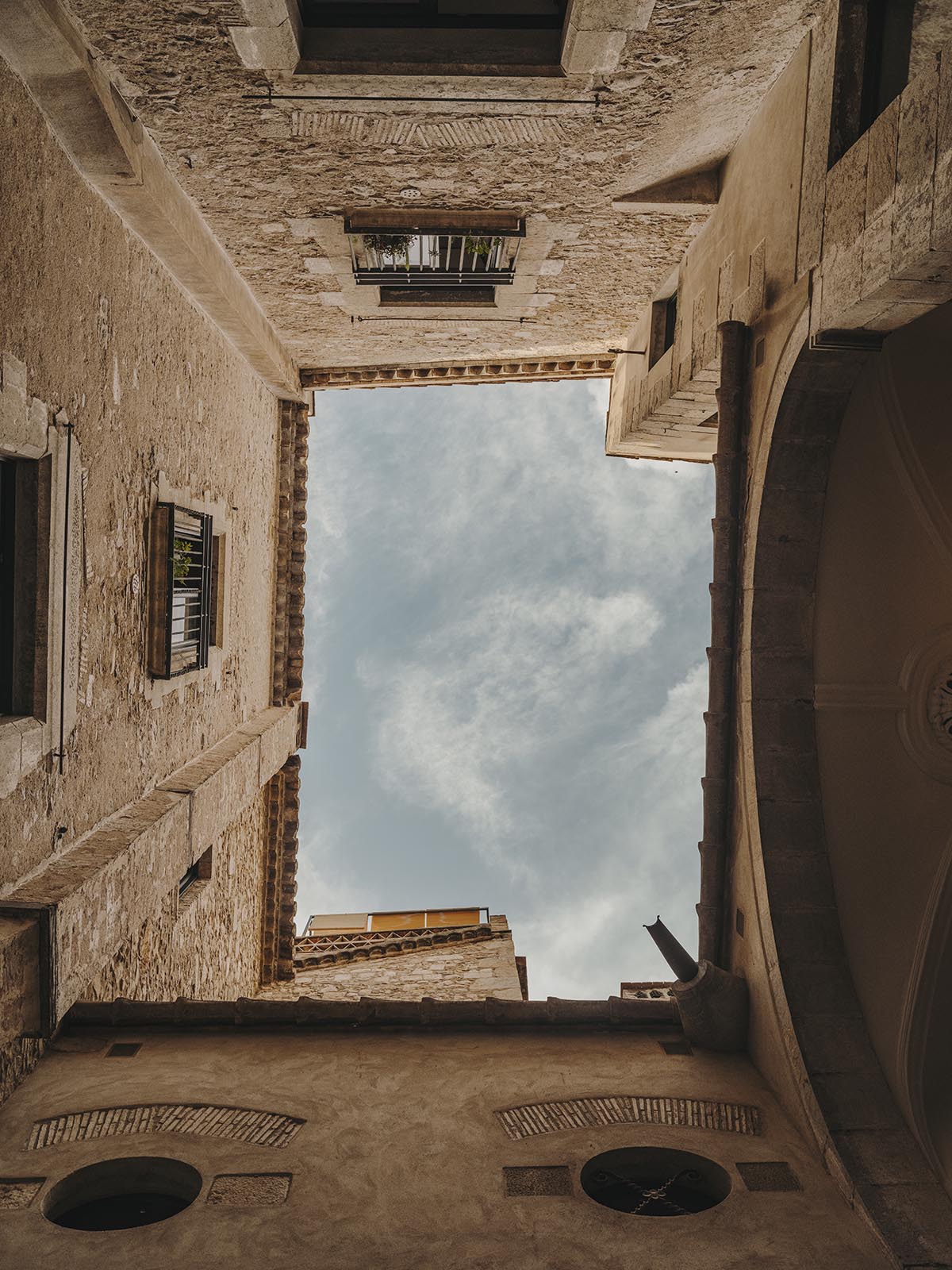
Entrance
In contrast to the bold contextual references, the designers have highlighted the lighter side of the city. To achieve this, the studio used vibrant colours that bathe the townhouses flanking the River Onyar, along with Girona’s most famous spring celebration - El Temps de Flors (The Time of Flowers).
These influences were enhanced with striking modern art and crafted objects, which create a hotel that begs to be discovered and enjoyed.
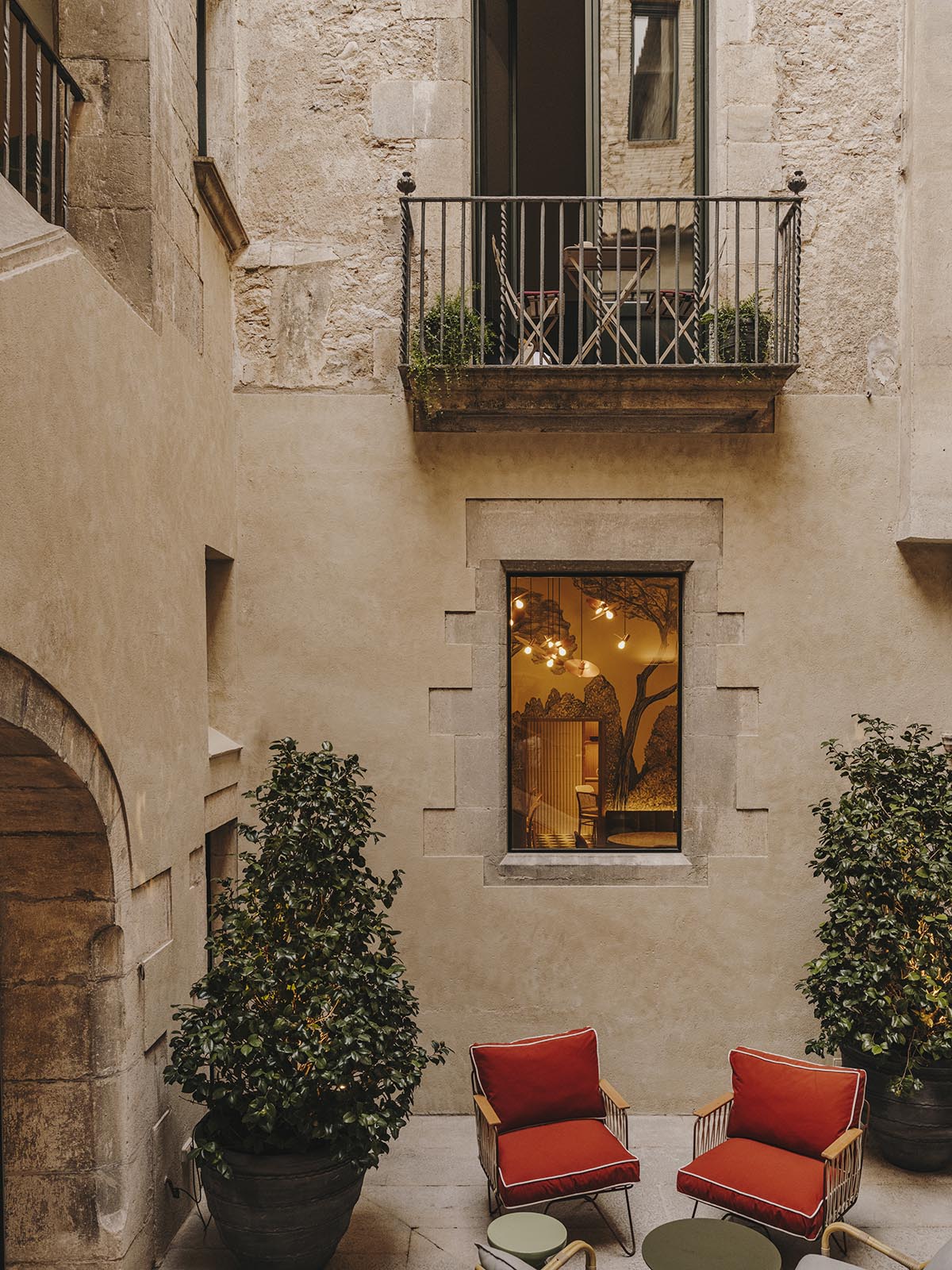
Entrance
"A sense of high luxury minus the pretensions"
"We aimed to create a sense of high luxury minus the pretensions. We respected the original architecture, of course, but with fresh, elegant, surprising and, at times, a little disruptive elements," said El Equipo Creativo.

Entrance
The building
Palau Fugit highlights two principal parts: both adapted to the needs of modern travellers and experience hunters by the Barcelona-based architecture studio Isern Associats.
The first part of the building is the original palauet - here the studio renamed an arched courtyard as "La Placeta".
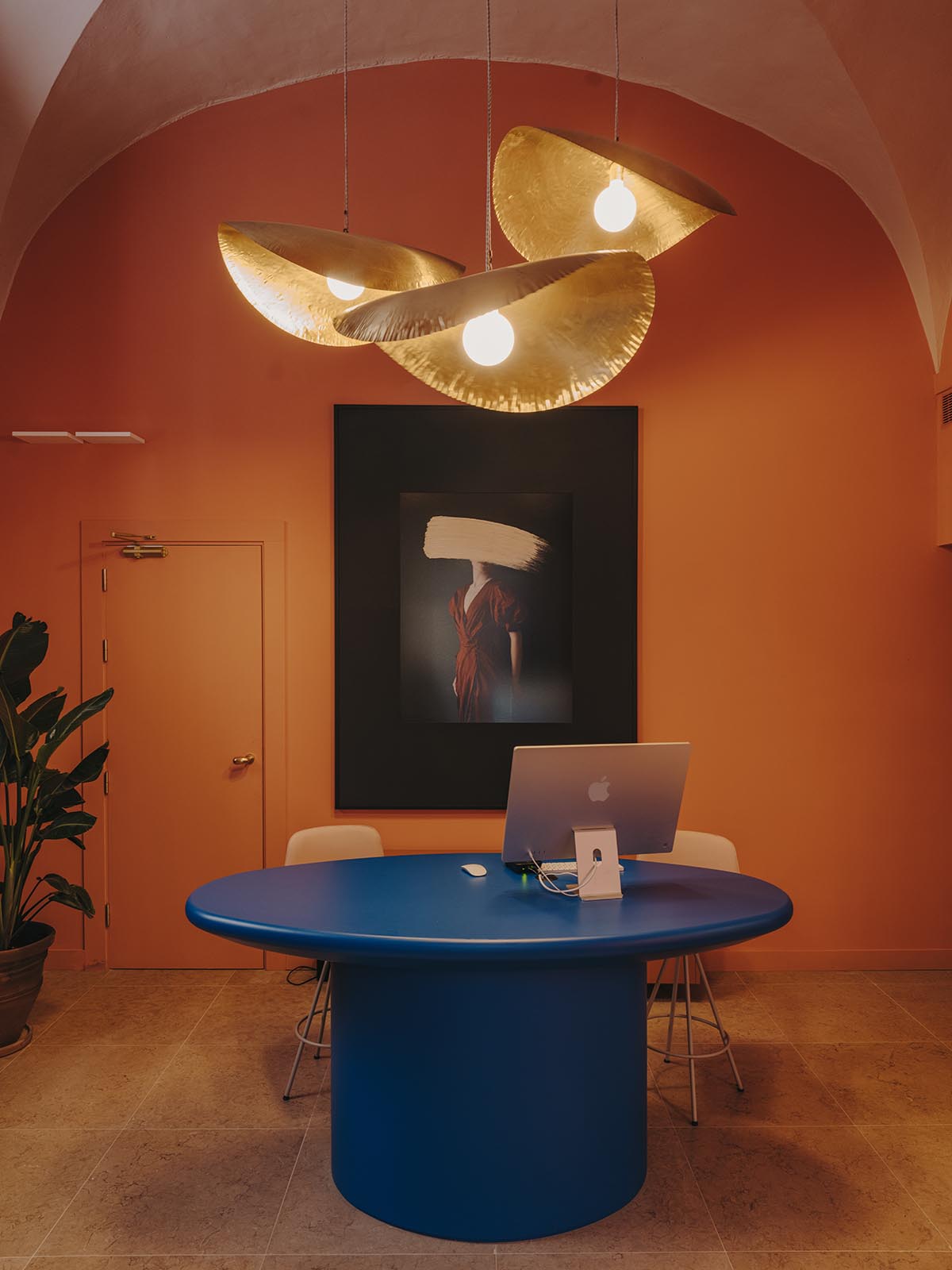
Reception
La Placeta houses the reception area, restaurant, and cocktail bar, as well as a tucked-away spa-for-one. Guests reach the rooms using the palace's original stairs.
The Pavelló is the second building - which is an annexe that takes shape with a modern, rational approach. Both volumes are connected by a terrace, or the ‘heart’ of the hotel.

Reception
Endowed with a small swimming pool, abundant ferns, and a poetic central sculpture - titled Font de Gararotes - by renowned local artist Frederic Amat, it provides a serene oasis for guests and a natural connection between the two edifices.
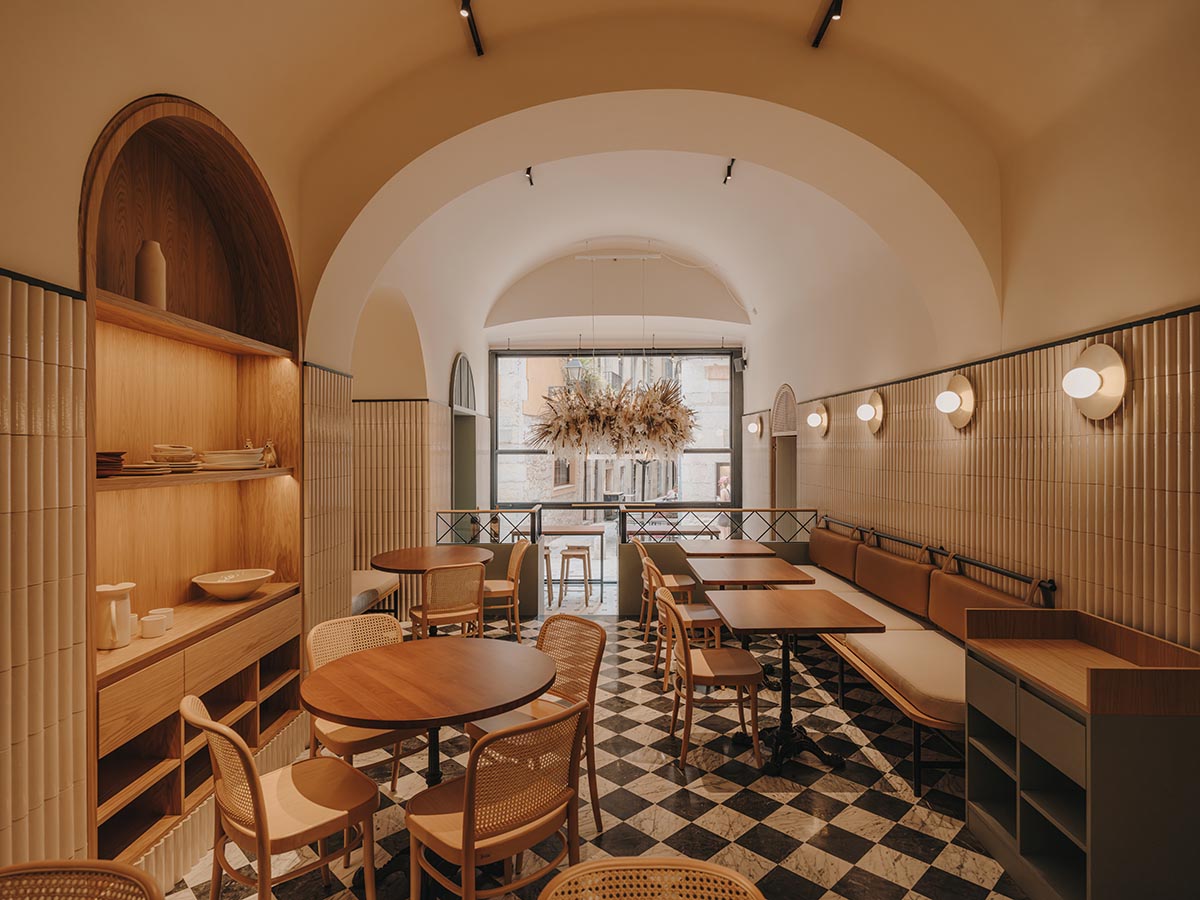
Restaurant
A "feminine" presence throughout the rooms
For the rooms in El Palauet, the studio reimagined the sumptuous decor of the fin de siècle through a prism of contemporary design and art.
The designers' goal was to instill a ‘feminine’ presence throughout, recreating the warm and eclectic ambiance of a noble family nest.
To create a rich visual experience, the team made a careful attention to detail and the selection of materials and textures. This was further enhanced by a curation of paintings, sculptures, murals, and photographs - all of which are original works by local artists.

Restaurant
Although each room and suite presents a design story unto itself, gothic arches and porticoes, a dominant architectural motif of Girona’s Barri Vell, are a recurring influence and narrative.
Curvaceous chaise longues, bespoke rattan bed heads, and avant-garde lighting enfold the guest. Surfaces and textiles, from velvet drapes to strategically placed mirrors, invite the user to linger and relax in this historic setting.
Anchoring each room is a custom-made marble vanity unit, a monolithic interpretation of the tocador (dressing table) that exemplifies domestic life of the period.
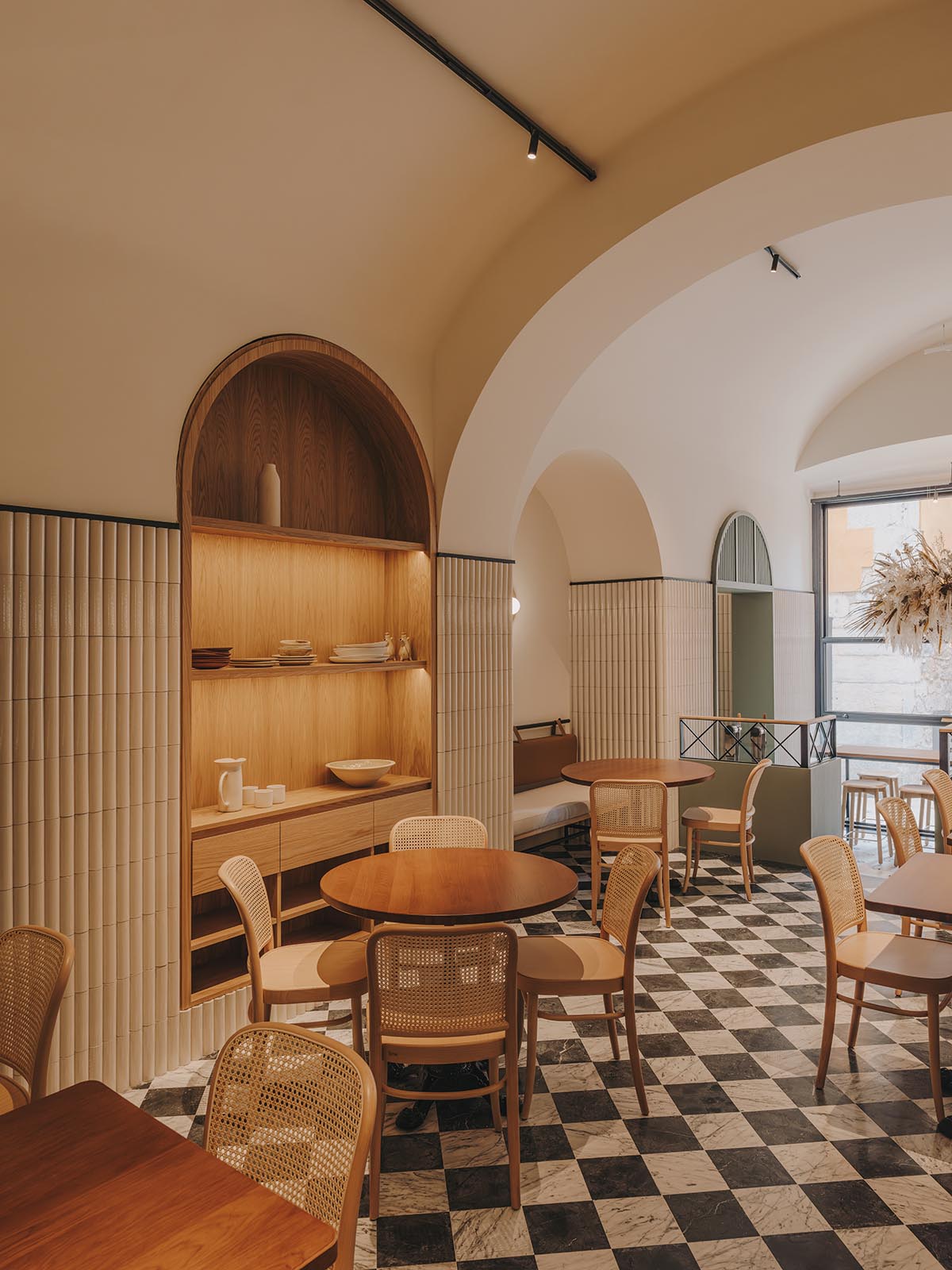
Restaurant
The rooms in El Palauet brim in a palette of natural stone shades and soft blues, greys, and blush tones, creating an elegant mise en scène that is very contemporary and lends new life to original features such as ceiling roses and carved balcony shutters.
This mood changed in El Pavelló - an ode to ‘la dolce vita’ of the Mediterranean. A palette of terracotta, locally made ceramics, and wood give a mid-century chic feel to the rooms, each enhanced by natural light pouring in through direct patio access.

Restaurant
Handmade terracotta breeze blocks and tiles create rippling shadows and textured surfaces, and rattan chairs and occasion tables evoke the local craft ateliers of the Costa Brava.
With splashes of colour and handspun textiles, the overall feel is at once casually glamorous and effortlessly cool.
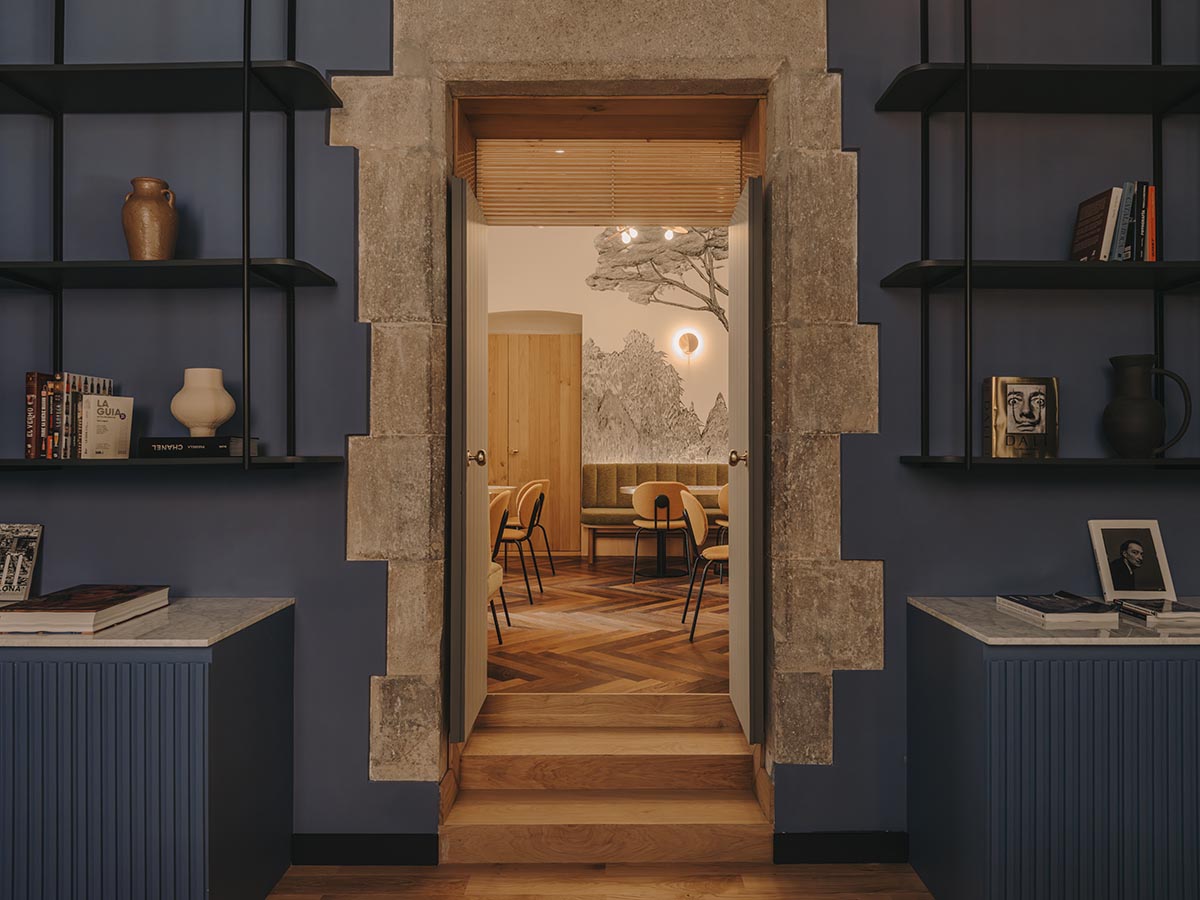
Library
The public and social spaces
The hotel’s restaurant, named Casa Heras, is inspired by the social and hospitality areas of the original palace and adapted to modern lifestyle and comfort.
Thanks to modern art and objects, the spaces are elevated to another level, as seen in the whimsical wall murals created by Joana Santamans, and bespoke ceramic pieces from the artisan Núria Gimbernat.
"Sparkling copper pots and pans placed on an antique dresser fill the dining room, while high-quality tables, chairs, and fittings denote a timeless modern feel," said the studio.
Adjacent to this, El Salon provides a space for a cocktails and intimate conversation, surrounded by vestiges of the palau’s ancient walls. The library, named La Biblioteca, was designed as a distinguished space to host private banquets and meetings around a beautiful oval marble table.
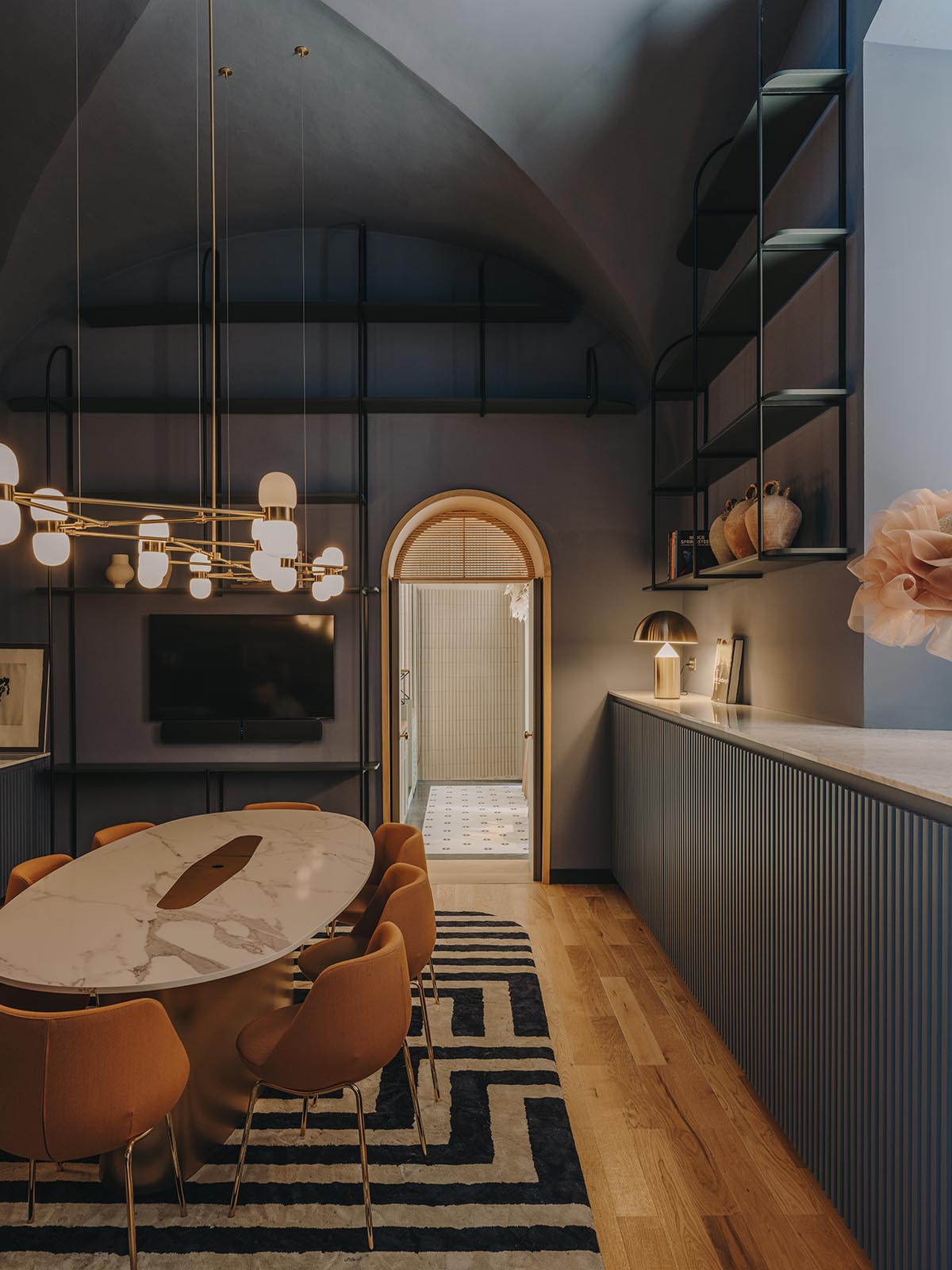
Library
La Placeta was aimed to be "a little more disruptive, and the idea of re-introducing the palace to the social life of the city was essential to the project," according to the studio.
"Cradled by stone arches and an original staircase, La Placeta presents a place to meet and chatter around zesty-coloured armchairs and tables that are full of personality."
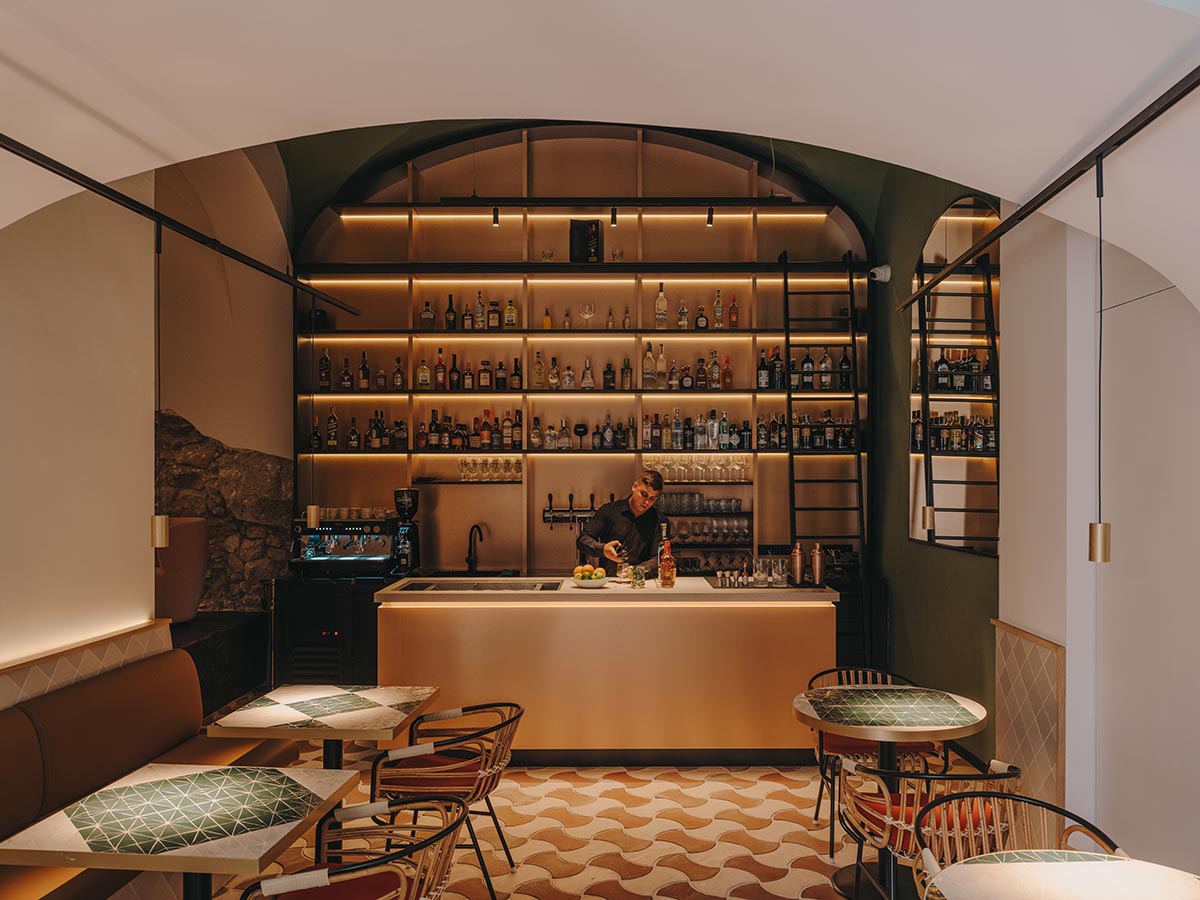
Bar
There is a bespoke reception room adjacent to La Placeta, and in this reception room guests can check in at a bespoke Yves Klein blue reception table, overhung by a blossoming golden chandelier.
The studio believes that "this composition sets the tone for the rest of the hotel - a concept that balances history and modernity, formality and informality, and offers a unique and welcoming base while experiencing the rich history and culture of Girona."
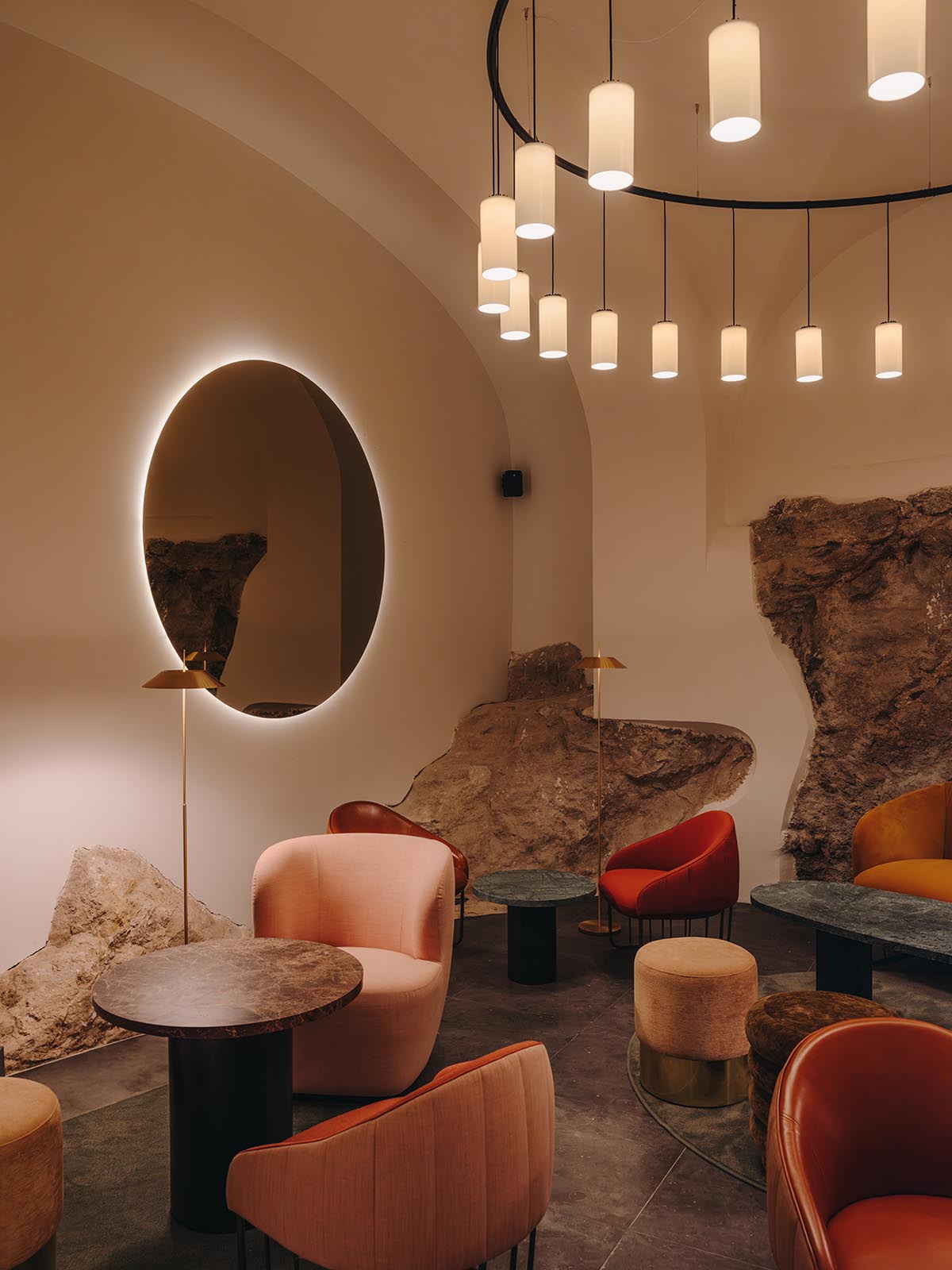
View from Bar
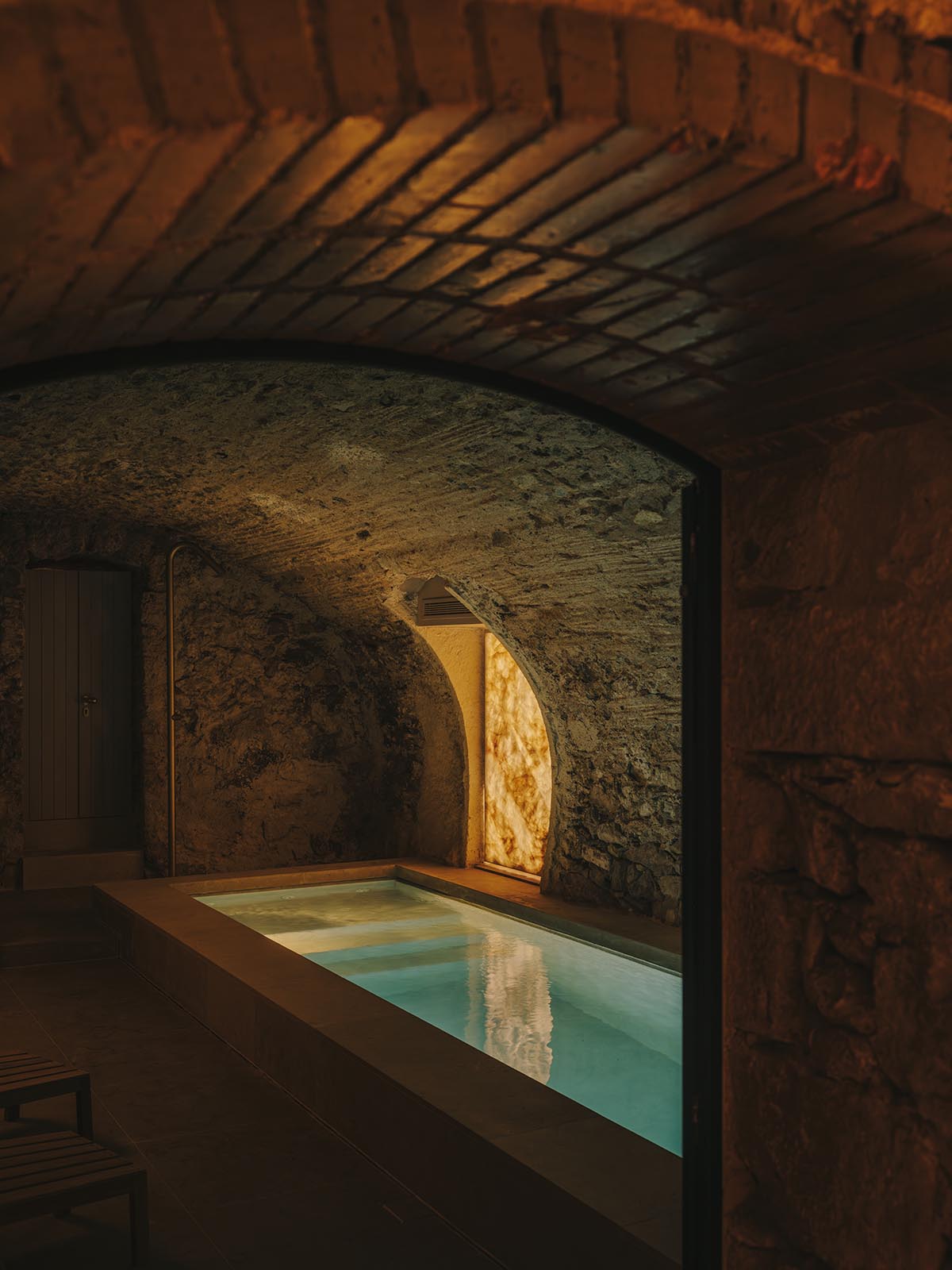
Spa
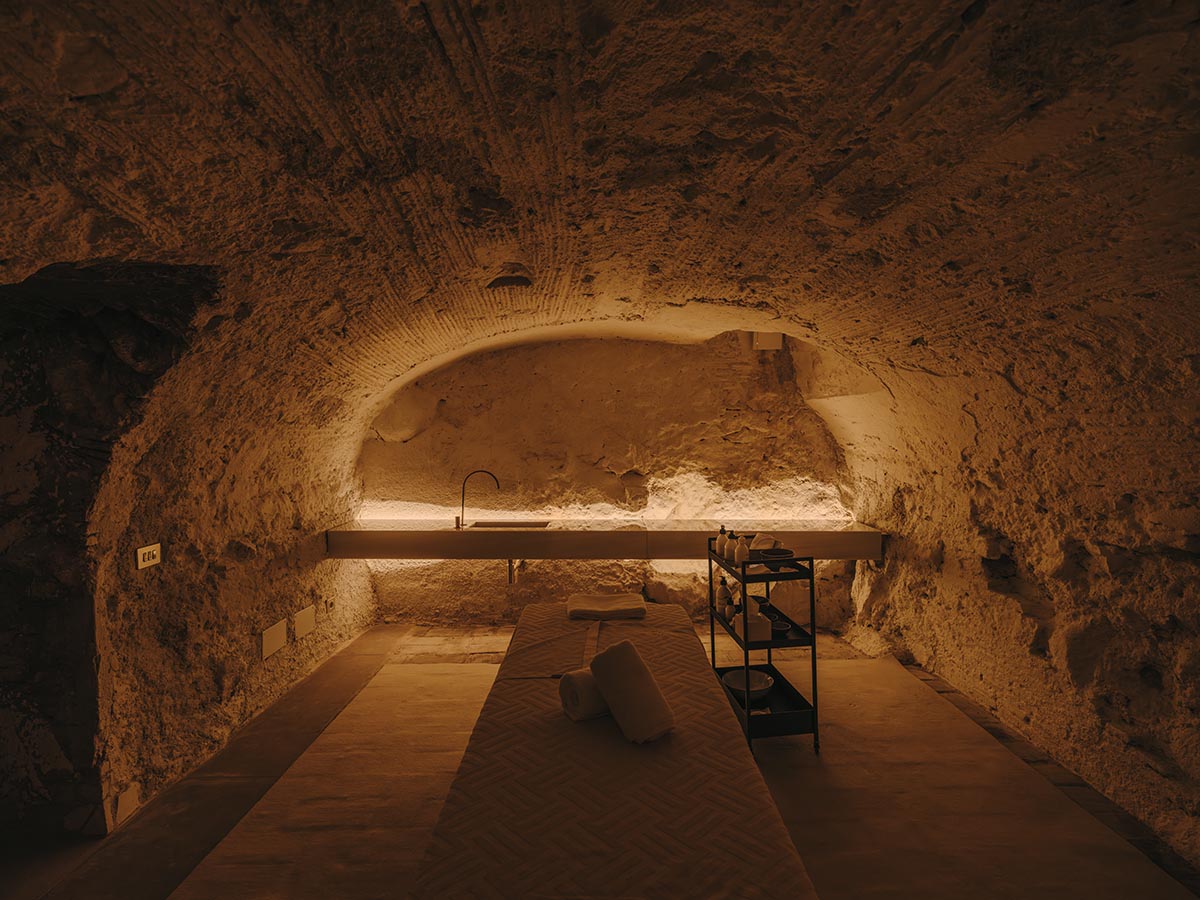
Spa

Patio

Patio
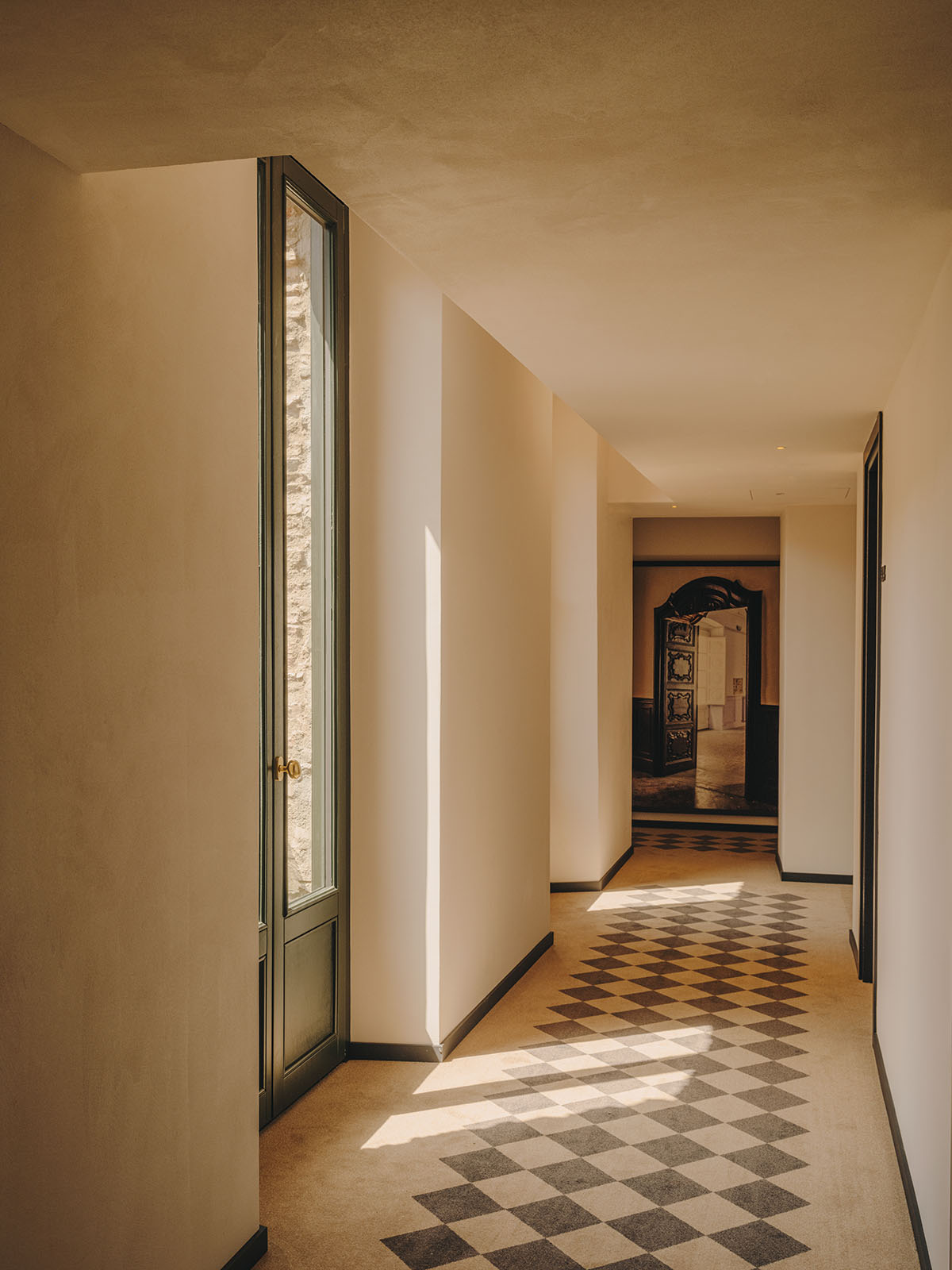
Corridor
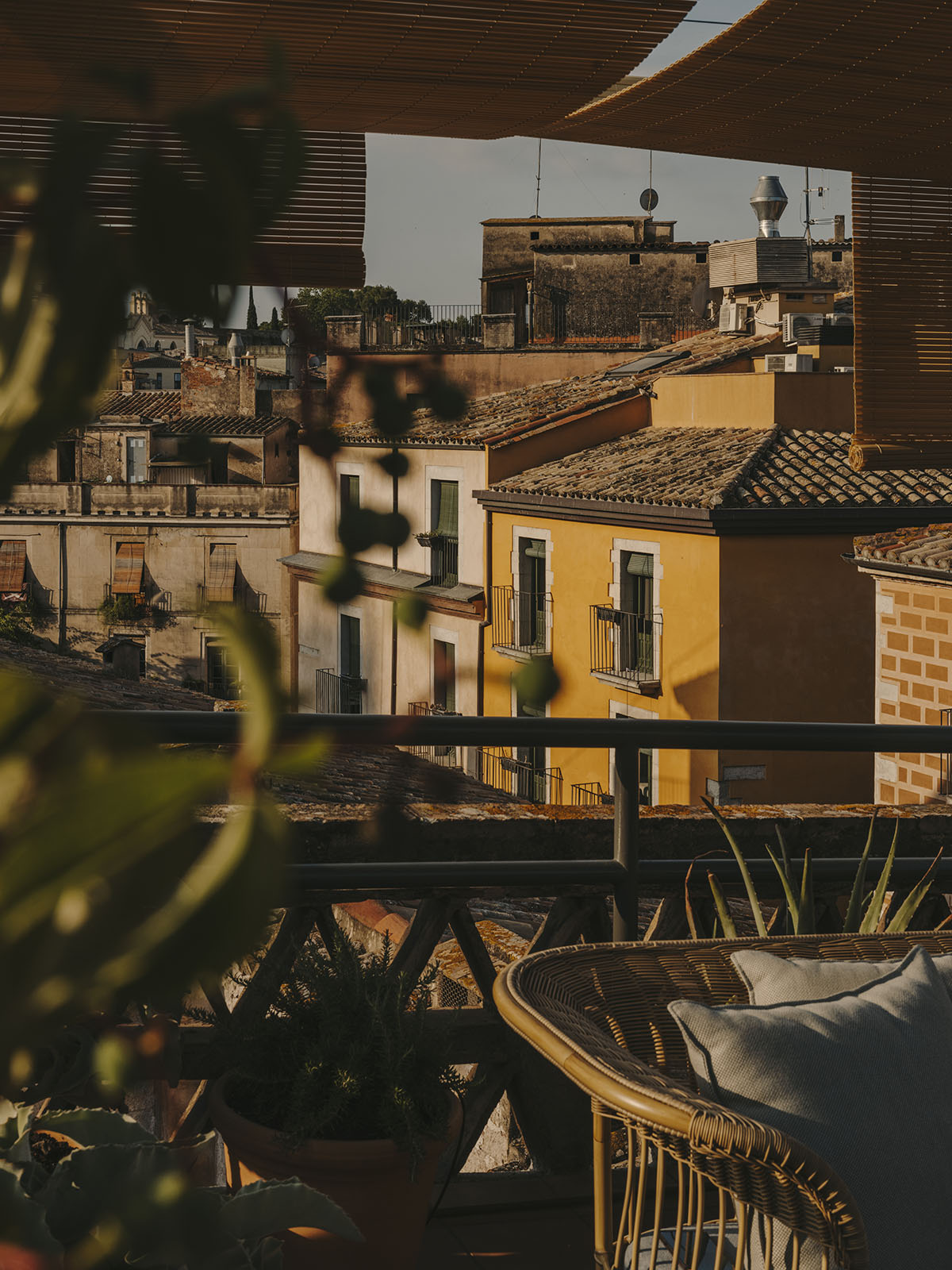
Terrace
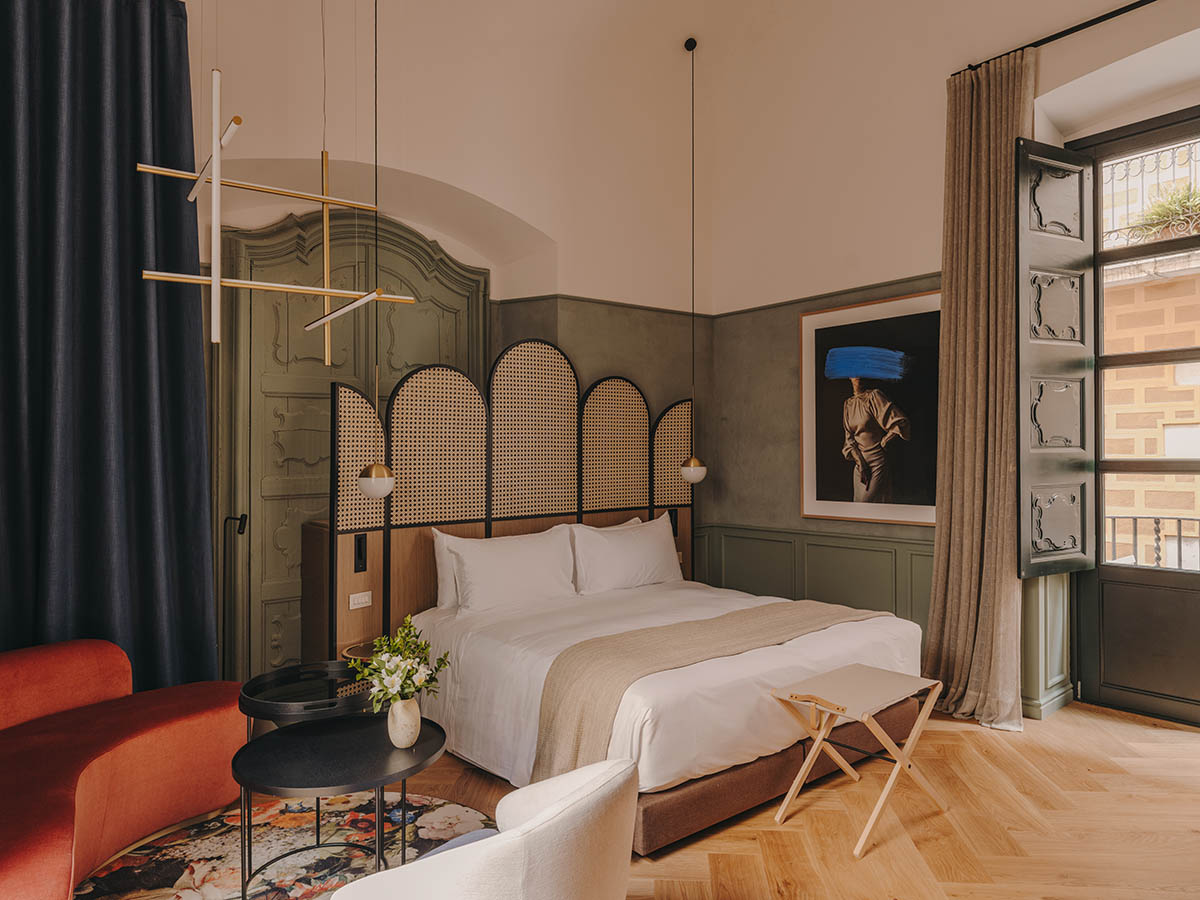
Room Palau
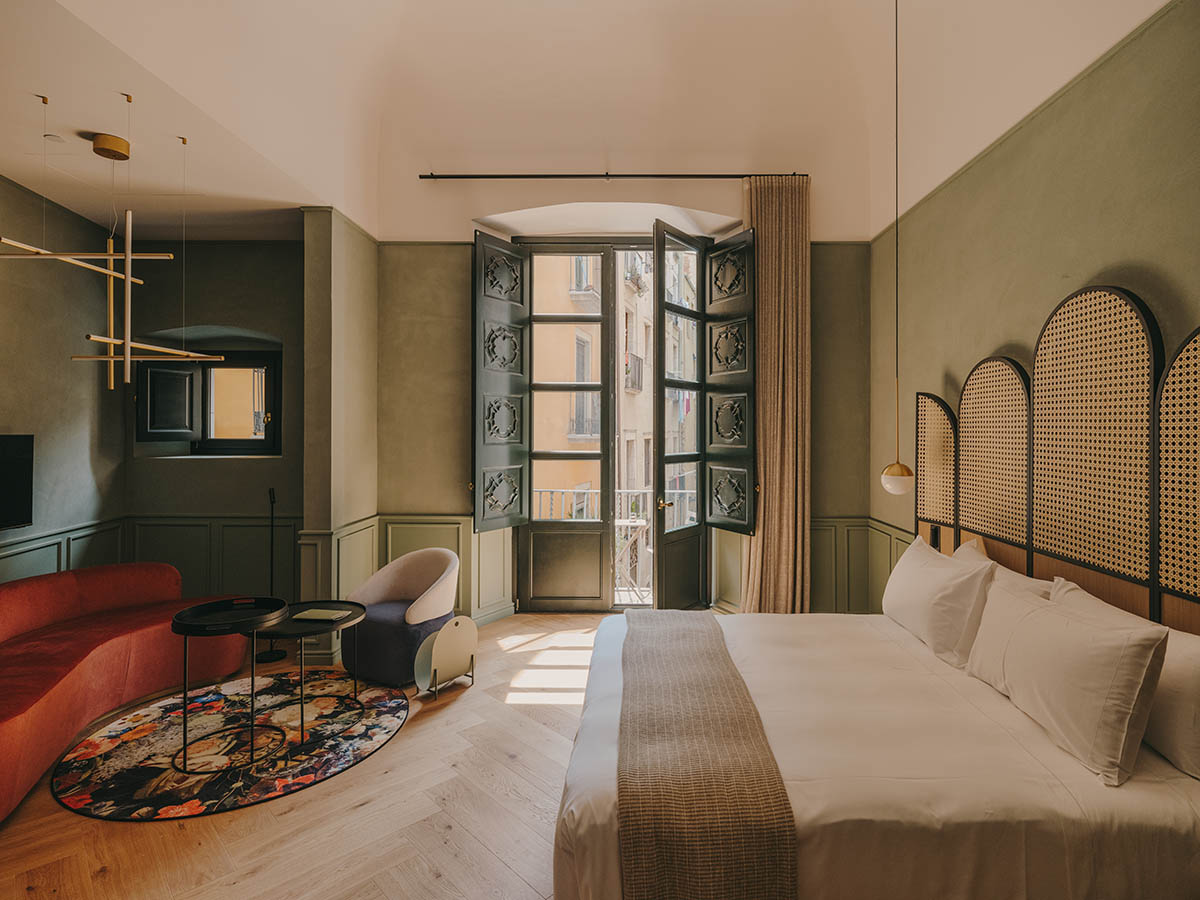
Room Palau

Room Palau
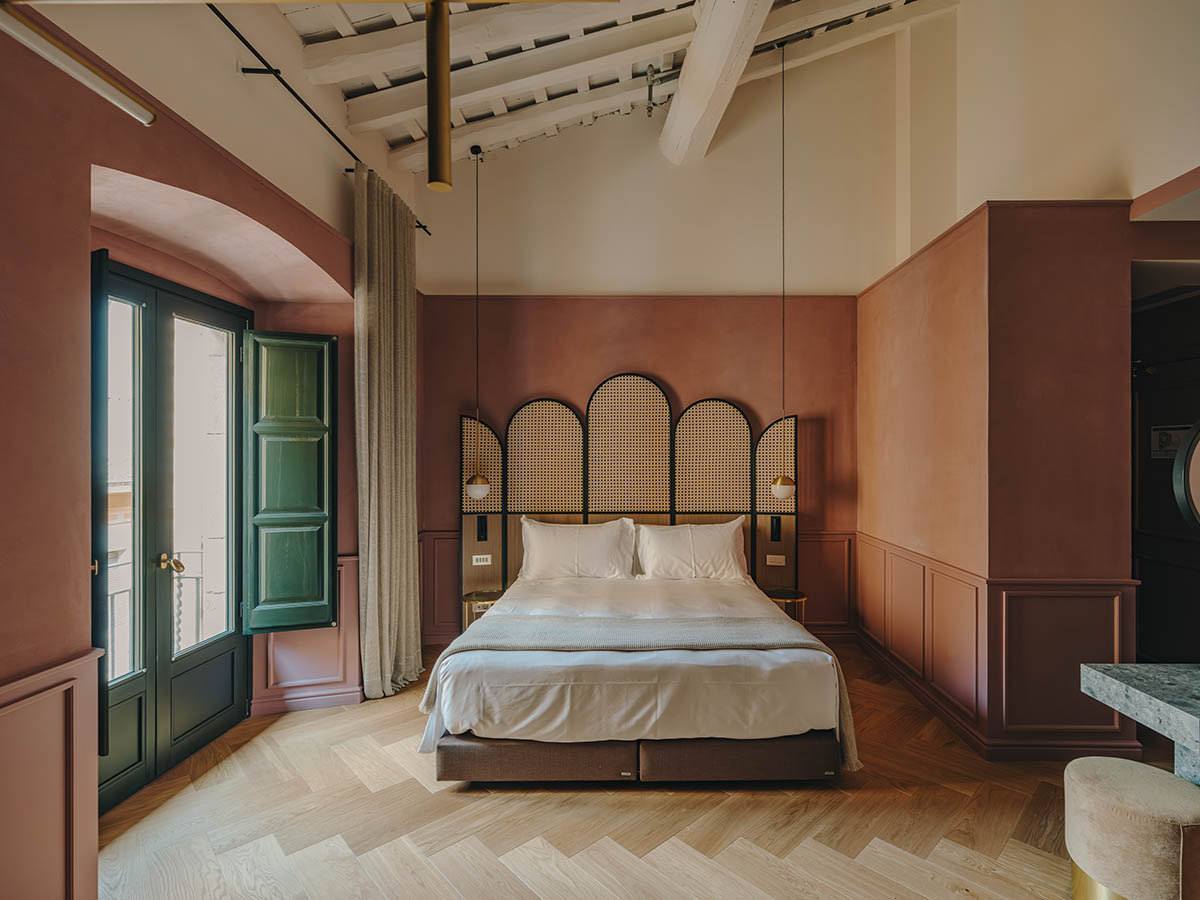
Room Palau
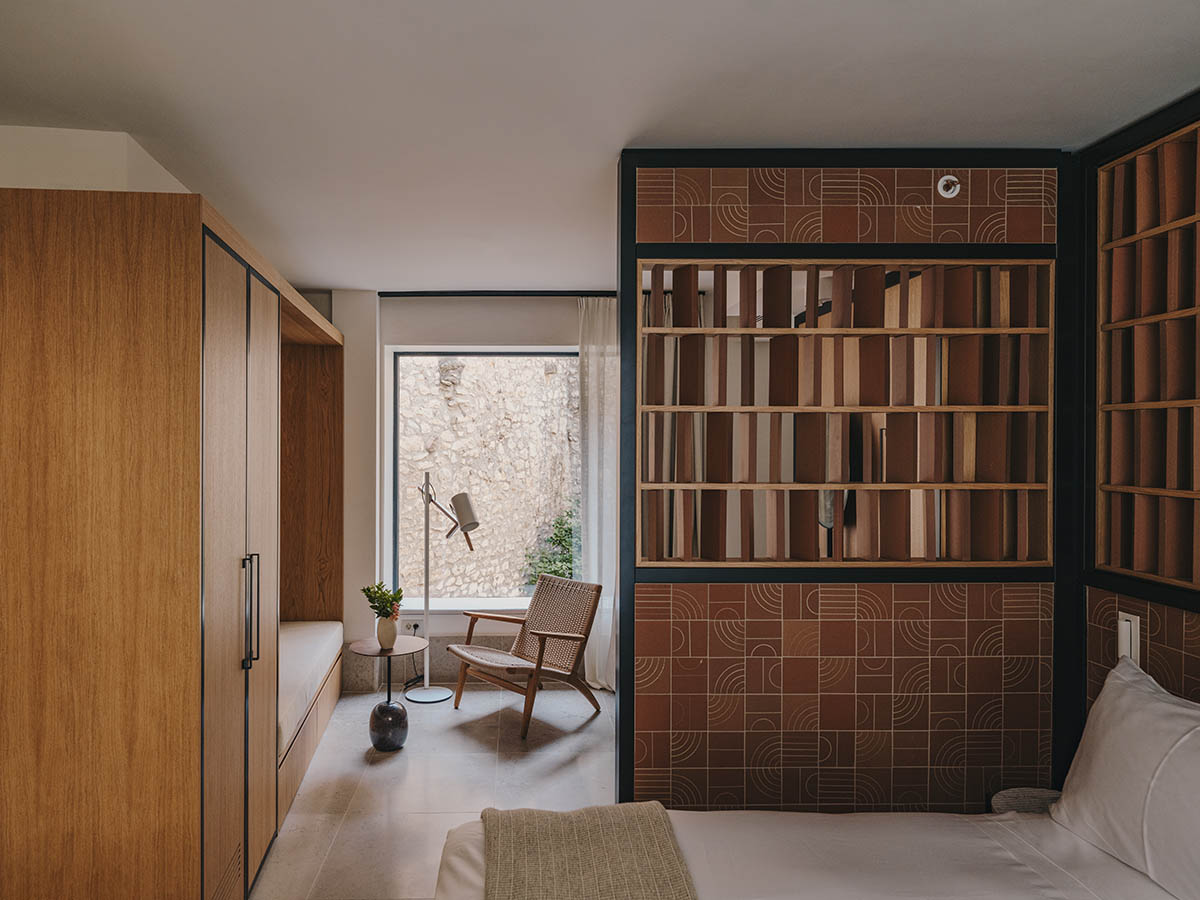
Room Pavello
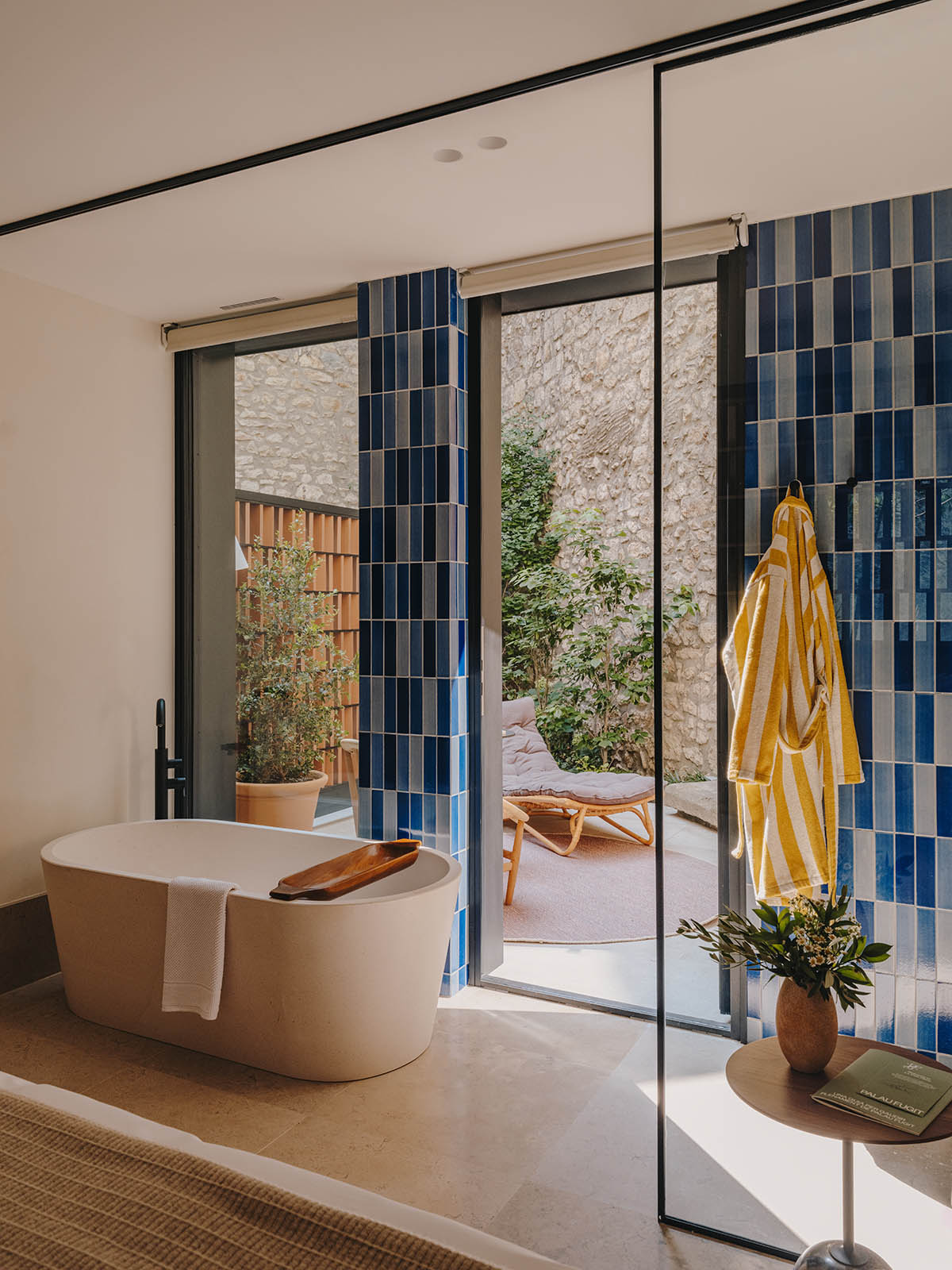
Room Pavello
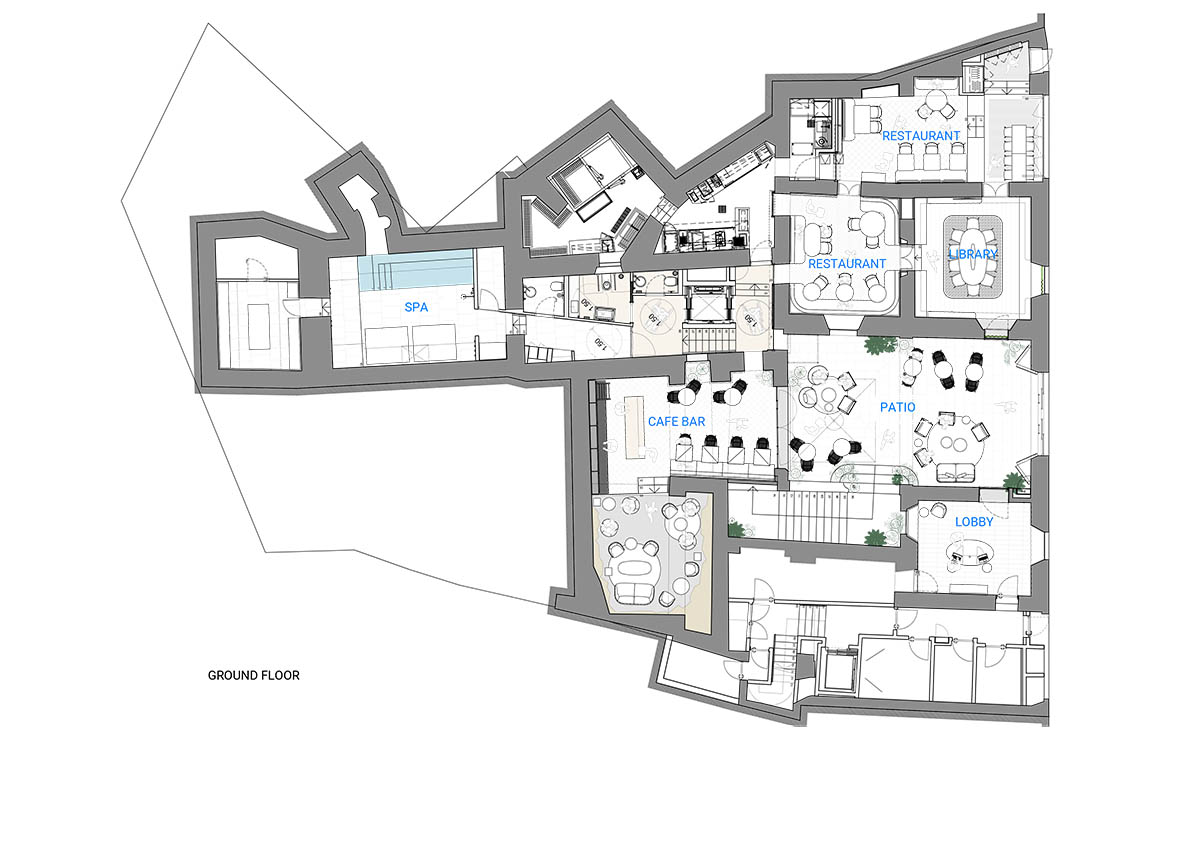
Floor plan
El Equipo Creativo was founded in 2011 by architects Oliver Franz Schmidt, Natali Canas del Pozo, and Lucas Echeveste Lacy.
The firm is a renowned Barcelona-based interior architecture and design studio specializing in the design of hospitality, gastronomy, and brand spaces.
Project facts
Interior Design: El Equipo Creativo
Partners: Oliver Franz Schmidt, Natali Canas del Pozo, Lucas Echeveste Lacy
Team leaders: Daniel Trujillo, Ricard Fabregat
Client: Marta Granés + Stéphane Rouze
Architecture: Isern Associats
Engineering: Impros
Completion date: 2023
Special Fixtures and Furniture: Martinez Otero
General Construction: Tecgi
Lighting Distributor: Ca2l
Art: Frederic Amat, Joana Santamans, Andrea Torres
Furniture Distributor: Idees
All images © Salva Lopez.
Drawing © El Equipo Creativo.
> via El Equipo Creativo
El Equipo Creativo Girona hospitality hotel terracotta transformation
